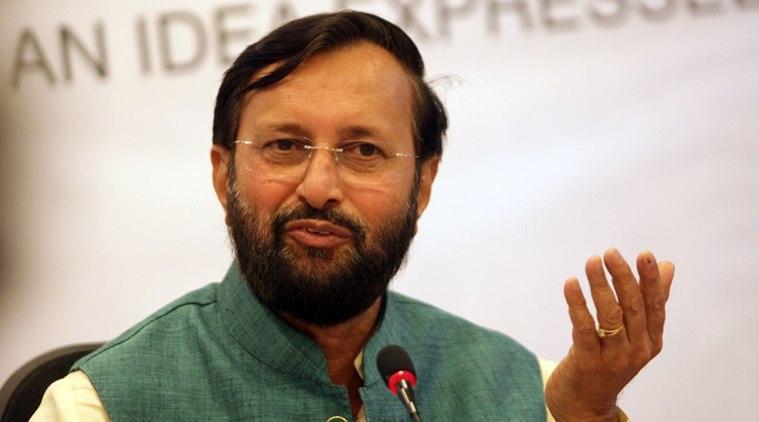Commercialisation Too Slow for Government? Central Universities Urged by MHRD to Re-send MoUs

Image Used For Representation Purpose Only
Ministry of Human Resource and Development (MHRD) has sent letters reminding central universities to send the tripartite Memoranda of Understanding (MoU) – between the MHRD, the UGC and the central university – after getting it approved by the Executive Council (EC). The MoU needs to be sent by the central universities in order to get government funds. It includes ways in which the institutes will pay back the loans which they take from the Higher Education Financing Agency (HEFA), such as by increasing fee receipts and research earnings.
Although the HRD letter is not in the public domain, Newsclickgot access to the letter. It states that:
“The MoUs prepared earlier were returned to the concerned CUs [Central Universities] with a request to re-send the same after getting these approved by the EC. Since signing of the MoU is linked to release of funds, it is requested that the MoU, duly approved by the EC, may be furnished within a week positively. In case there is any problem in convening the meeting of EC, the same may be got done through circulation.”
The MoU will be signed “with the objective to assess and facilitate the performance of the Central University on selected key parameters against the targets set so as to incrementally improve the performance of the University,” as per a revised draft MoU dated October 03, 2017.
Some of the most detrimental provisions of this revised draft MoU are as follows:
1.3.2 To adhere through global best practices and bench marks in respect of … Quality Publication, Academic and sponsored research output and Industry driven initiatives.
1.3.3 To increase the student capacity to meet the growing demands for competent manpower from National and International markets.
2.2 The Central University shall endeavour ensure gradual annual increase in the user charges/ fees charged by it for its various courses and facilities.
Some of the main outcome-based “Performance Parameter[s]”, according to the draft MoU are:
The number of students placed through campus interviews, qualified for NET/SET/SLET/Ph.D., cleared competitive exams – civil services, judiciary etc.
Number of papers published in UGC listed journals (which were vastly reduced earlier this year), and research projects sanctioned/completed.
Patents filed and awarded, and exceptional international awards/honours.
NIRF ranking (overall and discipline-wise), Times Higher Education (THE)/ QS World/ BRICS/Asia Ranking, and NAAC grading.
Also Watch: Thousands March in Shiksha Bachao Rally to Save India’s Future
While there is nothing wrong in including such parameters, the whole focus is on them. While the parameters which should have been given more weightage are either not mentioned, or given miniscule weightage. For instance, the quality and contents of syllabi, the representation of marginalised sections of society (students, teachers and non-teaching staff), the social impact generated by the alumni and teachers find no mention at all.
The parameters are completely outcome-based, ranking-based and are incompatible with building a higher education system which is of high-quality, affordable and accessible to the poor. The focus is only on “world class” and “top rated” tags, and on attracting more private investment, so that the government can gradually hand over the entire public education sector to the corporates of India and the rest of the world.
The setting-up and promotion of HEFA, and the systematic destruction of University Grants Commission (UGC), ever since BJP came to power, has been denounced by teachers’ associations, students’ organisations and civil society, who have come out on the streets and spread awareness about such destructive moves amongst the masses. But apparently, even the boycott of these decisions and non-cooperation with the university and government authorities hasn’t affected the religious implementation of the free-market model in the education sector. If not opposed and rejected, which is absolutely necessary, this will surely sound the death-knell of education institutions meant for the progress of society based on the principles of equality, social justice and social emancipation.
Also Read: As 2017 Ends, India is One Step Closer to Pushing Education Out of Reach for the Many
HEFA was approved by the Union Cabinet in September 2016. It was registered as a Section – 8 Company under the Companies Act on May 31, 2017. Canara Bank has been identified as the partner for setting up the company. RBI granted a license under the RBI Act for HEFA to operate as NBFC on November 21, 2017 and to leverage the equity to mobilise money from market as per the requirements of the institutions. It was conceived as a special purpose vehicle for financing infrastructure and development projects by central universities – by raising funds from the markets, which in turn would be provided as zero-interest loans to the varsities.
Get the latest reports & analysis with people's perspective on Protests, movements & deep analytical videos, discussions of the current affairs in your Telegram app. Subscribe to NewsClick's Telegram channel & get Real-Time updates on stories, as they get published on our website.
























